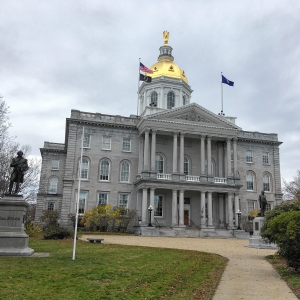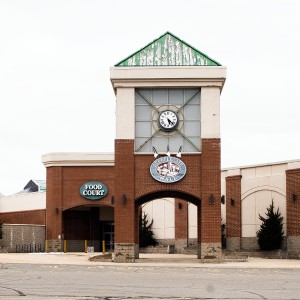Blossom and her restful hill
| Published: 05-27-2023 2:00 PM |
As the years pass, my thoughts wander at times to the life I have graciously lived. The early years seem to be very clear, memories about childhood adventures and friends that are no longer with me. It is with this thought in mind that I take you back to the year 1842 in the little town of Concord, New Hampshire.
Residents living within Concord gathered at their annual town meeting and addressed a multitude of concerns. Education was discussed, commerce was discussed and free roaming pigs, cows and additional animals that walked the streets were also discussed. Concord was on the verge of growth and the Old North Cemetery was the topic on that eve in 1842. A vote was cast and a cemetery committee was appointed to address the need to enlarge the Old North Cemetery, enlarge it enough to accommodate the good people of Concord for the next half century.
It was with this proposal of enlarging the Old North Cemetery when the private Minot Enclosure was constructed and additional land for the Quaker burials was also established. Both very historic and fine efforts by forebearers, but times were changing. Granite was slowly coming into fashion and the early quarrymen were solely prisoners from the New Hampshire State Prison, but the industry was slowly growing and the need for organized labor becoming more evident as the years passed. At the same time the need for labor was increasing in Concord we find a very sad situation in Ireland, the ongoing potato famine. Irish sharecroppers were perishing, their tenant farming techniques no longer valid, they rented the farms and planted the potato seeds in hope of raising a crop to pay the landlords. Year after year the blight destroyed the crops, consequently destroying the lives of thousands. It was my very own great, great grandfather Martin and his brothers; James, Michael and Thomas, that fell victim to this Irish curse. It was with only their dreams lining their pockets that they left Ireland and sailed across the Atlantic to join the ranks of countless Irish immigrants arriving in America in search of a future.
My great, great grandfather and his brothers arrived in Concord during the year 1850, soon finding employment as quarrymen. When the population increases the deaths also increase sadly. In the year 1840, just prior to the plans to expand the Old North Cemetery were established, we find a population in Concord numbering 4,903. Just ten years later in 1850 the population in Concord increased to 8,576 people. During the next ten-year period in 1860 the population totaled 10,896. The plan to accommodate the deceased with a larger version of the Old North Cemetery was simply no longer viable, the annual meetings placed a new cemetery as a priority and discussions continued.
On Nov. 26, 1859 the Concord City Council authorized, by resolution, to have Shadrach Seavey, John Briggs, Josiah Minot, Caleb Parker and Joseph Walker to purchase land from Francis Fiske for the purpose of a new Concord cemetery. The committee searched for the most appealing, convenient and hallowed of places settling on the Fiske property. It was a 30-acre parcel over by the Wood’s Brook and the cost was within their means. The 30-acre forest was purchased for $4,500 and on Feb. 4, 1860 a city ordinance established to entrust the Old North Cemetery and the newly acquired Fiske 30-acre parcel to the care of the cemetery committee.
As the spring of 1860 approached and the weather found to be favorable a survey of the Fiske land was completed. Plans were made for the layout and design and Civil Engineer John Briggs was hired to both survey the land and provide insight on the design. John Briggs was also known as a landscape gardener and took great care of designing this final resting place for the people of Concord.
As Briggs completed his survey, he submitted a plan to the city containing 170 burial lots. These lots were appraised at values varying from $5 to $45 dollars each. Initially 20 lots actually sold for $15 dollars while one large lot sold for $123 dollars.
Briggs laid out a mile and a half of carriage avenues and the workmen arrived following the Briggs plan. Since this large parcel was forested for the most part, there was a need to remove brush, trees and additional litter with seed planted to establish a lawn.
Article continues after...
Yesterday's Most Read Articles
 Youth rally against New Hampshire’s bill allowing medical aid in dying
Youth rally against New Hampshire’s bill allowing medical aid in dying
 As site testing begins on new middle school site, activists file to put location debate on the ballot
As site testing begins on new middle school site, activists file to put location debate on the ballot
 Lawyers and lawmakers assert the Department of Education is on the verge of violating the law
Lawyers and lawmakers assert the Department of Education is on the verge of violating the law
 A May tradition, the Kiwanis Fair comes to Concord this weekend
A May tradition, the Kiwanis Fair comes to Concord this weekend
 Neighboring landowner objection stalls Steeplegate redevelopment approval
Neighboring landowner objection stalls Steeplegate redevelopment approval
 State senator passes out on senate floor
State senator passes out on senate floor
As the cemetery was further established, the sale of lots increased, bringing revenue for additional work in the forms of beautiful plantings, stone walls and the establishment of the pond fed by Wood’s Brook. As the work continued at the new cemetery there was a renewed effort at the Old North Cemetery to beautify and enhance the grounds, paths, and avenues.
The work including the initial 170 lots at the new cemetery proceeded quickly, for there was a great need with the ever-growing population in Concord. The formal consecration of the new cemetery for the sacred purpose of future burials was completed on July 13, 1860.
With much reverence and thought surrounding the acquisition, planning, and establishment of the new cemetery there was one point that remained somewhat remiss. What would the new cemetery be named, commonly referred to as the new cemetery during this period? The people submitted their thoughts and wishes for this attractive hallowed ground. Yes, many names were submitted and many of the early citizens believed in the individual names that they had themselves submitted.
There was one submission that caught the eye of the cemetery committee. Simple in nature and without vain origins. The 30-acre Fiske land parcel that was now home to the new cemetery was fronted by the unpaved North State Street. Just up the knoll off the street the people would have traveled past for years, was a simple forest fronted by a little pasture that contained a single cow. This cow grazing during the summer of 1860 was certainly the most simplistic and pure image bestowed upon those that passed the little pasture.
The grazing cow was named Blossom. Blossom lived a good life for many years up on the hill to the west of North State Street. So it is that our families rest eternally in the most beautiful and sacred ground on North State Street in the Blossom Hill Cemetery.
]]>







 Barrington entrepreneur giving new life to single-use plastic
Barrington entrepreneur giving new life to single-use plastic For the first time, education commissioner speaks publicly about minimum standards revision, but he faces skepticism
For the first time, education commissioner speaks publicly about minimum standards revision, but he faces skepticism Adam Montgomery sentenced to minimum 56 years on murder charges in young daughter’s death
Adam Montgomery sentenced to minimum 56 years on murder charges in young daughter’s death
